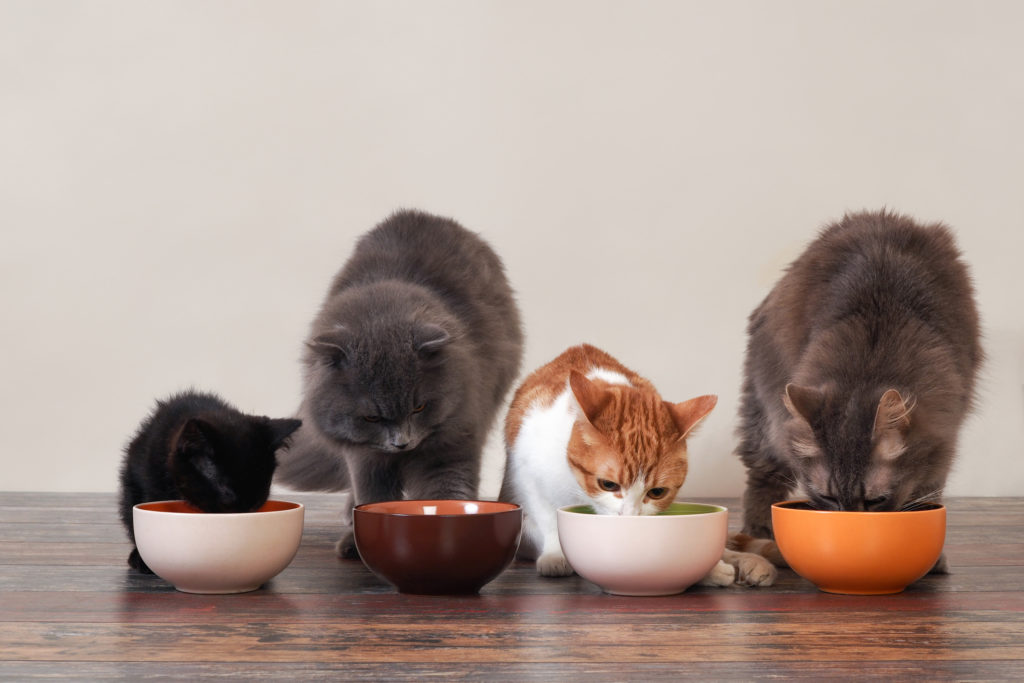As cute as it may look when a big plate is set out and kittens come running to nibble from it together, things are much different when cats mature. They grow into naturally territorial creatures who need their space. Even though siblings may eat closer together because there is a higher bond of trust, they still want – and need – their own dish.
Many pet parents choose to feed all the cats at once for convenience, usually at breakfast and dinner. To feed multiple cats in one room, set them up on a regular feeding schedule so they will learn to settle in place and wait. Feed them away from litter boxes or other strongly scented items, and spaced about a foot apart so that each cat feels comfortable.
If possible, feed them away from the kitchen area, perhaps in the breakfast nook or an adjoining area such as a mudroom. If not, they will get into the habit of being under your feet every time you cook.
Often, cats will choose to eat in the same spot each time, and they will prefer a certain orientation, usually where they can keep an eye on each other. It may be helpful to feed them on washable small area rugs. If a rug or mat feels comfy, they will be less impatient.
Two cats may not be getting along on a particular day, just like humans. Does any cat act wary near another cat? The nervous cat may need to be placed much farther away to feel comfortable letting their guard down for an enjoyable meal.
It’s important to stay with the cats throughout the meal to make sure everyone follows the rules. The little one may nibble, while Grandpa is slowly gumming his meal, yet the adult male gulps down his chow and starts cruising everyone else’s plate for more. If not regulated, this extra-hungry cat will become extra-large, and everyone else will feel too intimidated to eat with him. They all need you to be their monitor. Big Boy may have to be distracted away to another activity once he has finished his own meal, with praises for being a good kitty.
For this same reason, day-long kibble-grazing does not work well for a multiple-cat household. Sharing will not be equitable.
One advantage for cats is that they can take their meals on multiple levels. So, for instance, only the more lightweight cats might be able to reach food set out for them on a table, while the heavyset cat would be limited to his meal at floor level.
Cats with special diets or medications added to their food should be put individually into separate, enclosed rooms for their meals, to be sure that they are getting the full dose. They should finish in about 20-30 minutes and be returned to the group. Some may choose to stay in the quiet separate room and take a nap after dinner.
Some online sources suggest feeding the cats in shifts if dining together is a problem. In an open concept home, this is practically an impossibility because the sound of a can opening will bring all of them running back for more. The keys to feeding multiples are routine and supervision.

